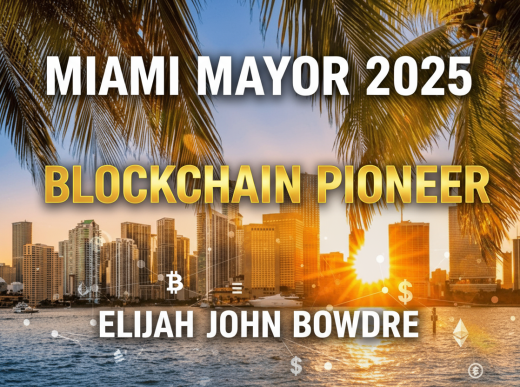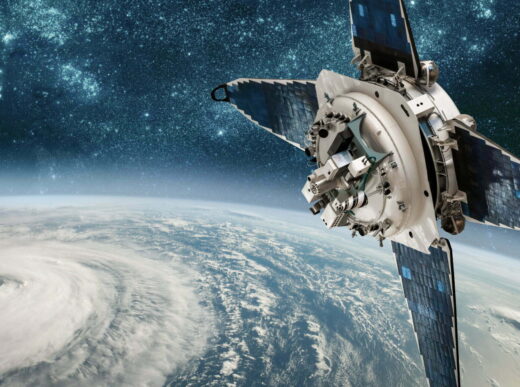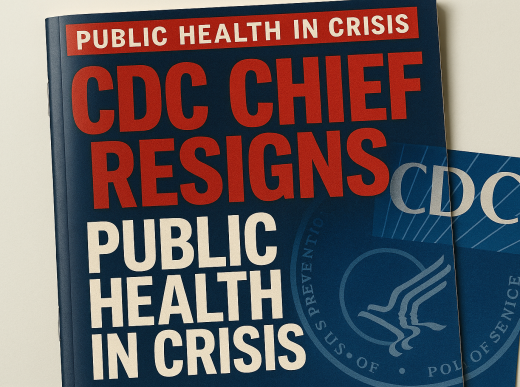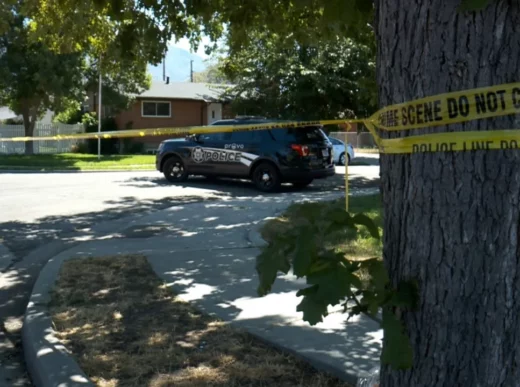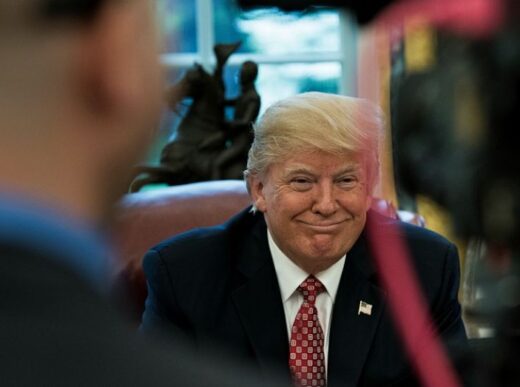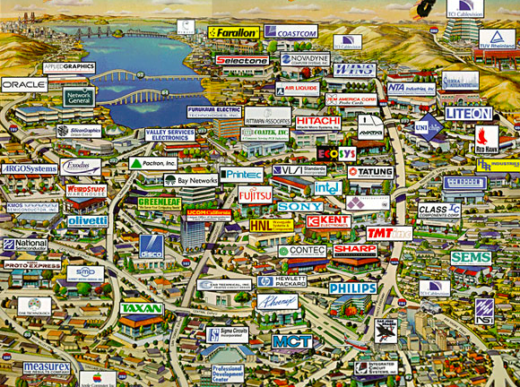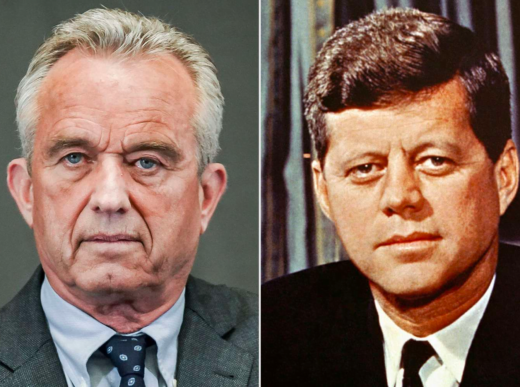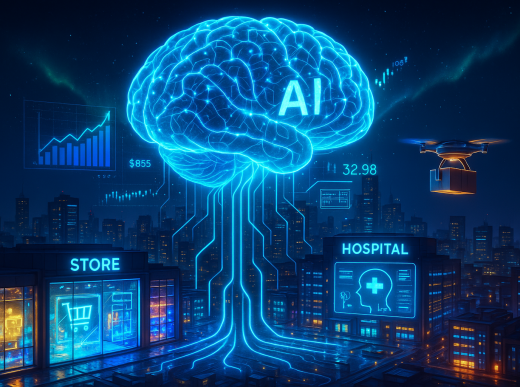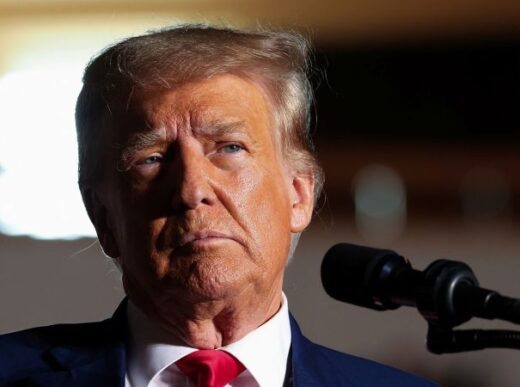# Labor Day 2025: Honoring America’s Workers Amid Political and Economic Transformation
*By Christopher Marshall*
As America observes Labor Day 2025, the nation finds itself at a pivotal moment in its relationship with work, workers, and the fundamental promise of economic opportunity. This year’s celebration carries particular significance as the United States approaches its 250th anniversary, marking nearly two and a half centuries of American labor contributing to what President Donald Trump recently called “the greatest production the world has ever known” [1].
The holiday, observed on the first Monday of September, serves as both a celebration of American workers’ achievements and a reflection point for the ongoing challenges facing the modern labor movement. From the bustling streets of New York City, where the first Labor Day parade marched on September 5, 1882, to today’s digital economy and manufacturing renaissance, the American worker remains, in the words of the current administration, “the beating heart of our economy” [2].
## Historical Foundations: The Birth of Labor Day
The origins of Labor Day trace back to a period of profound industrial transformation and labor unrest in late 19th-century America. The holiday emerged from what historians describe as “a dismal time for America’s workforce,” characterized by grueling working conditions, extended hours, and minimal worker protections [3]. The Central Labor Union’s organization of the first Labor Day celebration in New York City represented more than a simple parade—it was a declaration of workers’ dignity and their essential role in American prosperity.
The founding of Labor Day itself reflects the collaborative spirit that would come to define the American labor movement. Two men, both with remarkably similar names, can claim credit for conceptualizing the holiday. Peter J. McGuire, general secretary of the Brotherhood of Carpenters and Joiners and co-founder of the American Federation of Labor, advocated for “a general holiday for the laboring classes” to honor those “who from rude nature have delved and carved all the grandeur we behold” [4]. However, recent historical research increasingly supports the claim that Matthew Maguire, a machinist who later served as secretary of Local 344 of the International Association of Machinists in Paterson, New Jersey, was the true architect of the holiday [4].
> “The souvenir pen should go to Alderman Matthew Maguire of this city, who is the undisputed author of Labor Day as a holiday.” – Paterson Morning Call, following President Cleveland’s signing of the national Labor Day law [4]
The rapid adoption of Labor Day across state governments demonstrates the widespread recognition of workers’ contributions to American society. Oregon became the first state to pass Labor Day legislation on February 21, 1887, followed quickly by Colorado, Massachusetts, New Jersey, and New York within the same year [4]. By 1894, twenty-three states had adopted the holiday before President Grover Cleveland signed federal legislation on June 28, 1894, making the first Monday in September a national holiday [4].
This federal recognition came in the aftermath of the Pullman Strike, a nationwide railroad strike that had paralyzed much of the country’s transportation system. Cleveland’s decision to establish Labor Day as a federal holiday was seen as an attempt to repair relations with organized labor following his administration’s controversial use of federal troops to break the strike [5]. The timing underscored the complex relationship between government, business, and labor that continues to shape American economic policy today.
## The Evolution of Labor Day Traditions
The original vision for Labor Day celebrations, as outlined by its founders, called for a street parade to exhibit “the strength and esprit de corps of the trade and labor organizations” of each community, followed by festivals for the recreation and amusement of workers and their families [4]. This blueprint established a pattern that has endured for more than 140 years, though the nature of these celebrations has evolved significantly with changing times and circumstances.
The early Labor Day parades served multiple purposes beyond mere celebration. They were demonstrations of solidarity, showcasing the organizational strength of various trade unions and labor groups. The visual spectacle of thousands of workers marching together sent a powerful message about the collective power of organized labor. These parades featured elaborate floats, union banners, and displays of craftsmanship that highlighted the skills and contributions of different trades.
As the holiday matured, speeches by prominent figures became integral to Labor Day observances. The American Federation of Labor formalized this educational aspect in 1909 by establishing Labor Sunday, observed on the Sunday preceding Labor Day and “dedicated to the spiritual and educational aspects of the labor movement” [4]. This addition reflected the growing recognition that Labor Day should serve not only as a celebration but also as an opportunity for reflection on the broader social and economic implications of work in American society.
The modern Labor Day weekend has taken on additional cultural significance as the unofficial end of summer for many Americans. This timing, coinciding with the return to school and the transition from summer to fall activities, has made Labor Day weekend a focal point for family gatherings, travel, and leisure activities. The holiday’s position in the calendar has also made it a significant marker in the retail and tourism industries, generating billions of dollars in economic activity annually.
However, the traditional parade and festival format has faced challenges in recent decades. Many communities have seen their Labor Day parades diminish in size and scope, reflecting broader changes in union membership and community engagement. According to the Bureau of Labor Statistics, union membership in the United States has declined from a peak of approximately 35% of the workforce in the 1950s to just over 10% today [6]. This decline has inevitably affected the scale and visibility of traditional Labor Day celebrations in many areas.
Despite these challenges, Labor Day continues to serve as an important platform for addressing contemporary labor issues. Modern celebrations often incorporate discussions of current workplace challenges, from wage stagnation and benefits erosion to the gig economy and remote work arrangements. The holiday provides an annual opportunity for labor leaders, politicians, and community organizers to address these evolving concerns and advocate for policy solutions.
## Labor Day 2025: Political Context and Presidential Perspective
The 2025 Labor Day observance occurs within a distinctly charged political environment, as the Trump administration’s second term brings renewed focus to issues of American manufacturing, trade policy, and worker protection. President Trump’s Labor Day proclamation for 2025 reflects themes that have become central to his administration’s economic agenda, emphasizing the restoration of American manufacturing and the prioritization of domestic workers [2].
The proclamation’s language reveals a narrative of economic nationalism that positions the current administration as the defender of American workers against what it characterizes as decades of misguided policies. “Tragically, in recent decades, a corrupt political class allowed our manufacturing base to decline,” the proclamation states, framing the administration’s policies as a corrective to previous approaches that “shipped our jobs to distant shores” and “decimated our industries” [2].
This framing reflects broader themes in contemporary American politics, where trade policy, immigration, and manufacturing have become central battlegrounds in debates over economic policy. The administration’s emphasis on “Buy American and hire American” policies represents a significant departure from the free-trade consensus that dominated American economic policy for much of the late 20th and early 21st centuries [2].
The proclamation’s specific mention of “American-born workers” has drawn attention from labor advocates and immigration rights groups, who see it as part of a broader pattern of policies that link immigration status to employment opportunities [2]. This language reflects ongoing tensions within the American labor movement itself, where some unions have historically supported restrictions on immigration as a means of protecting domestic wages and employment, while others have advocated for comprehensive immigration reform and worker protections regardless of legal status.
The administration’s trade policies, particularly its use of tariffs, represent another significant element of its labor agenda. The proclamation boasts of “amassing hundreds of billions of dollars in tariff revenue” and ensuring that “every product of American craftsmanship is appreciated for its true value in overseas markets” [2]. These policies have generated significant debate among economists and policy experts, with supporters arguing that they protect American jobs and critics contending that they increase costs for consumers and may ultimately harm economic growth.
The political context of Labor Day 2025 is further complicated by organized opposition to the administration’s policies. The “Workers Over Billionaires” protests, organized by the AFL-CIO and dozens of other groups, represent a significant challenge to the administration’s claim to represent American workers’ interests [7]. These protests, scheduled for Labor Day itself, highlight the deep divisions within American society over economic policy and the role of government in protecting worker interests.
> “This isn’t just about policy — it’s about building meaningful worker power to fight back and build a movement rooted in real life, led by real people. From warehouses to kitchens, from schools to streets — we are saying it loud, we are saying it proud: Workers over billionaires now!” – Workers Over Billionaires organizers [7]
The scale of these protests, with more than 1,000 events scheduled as of late August, demonstrates the continued vitality of labor activism even in an era of declining union membership [7]. The involvement of major labor organizations, including the National Education Association and the American Federation of Teachers, alongside political advocacy groups like MoveOn and Indivisible, reflects the increasingly political nature of contemporary labor organizing.
## The Modern Labor Movement: Challenges and Resurgence
The American labor movement in 2025 presents a complex picture of decline and renewal, reflecting broader changes in the economy, technology, and worker expectations. While union membership has reached historic lows, recent years have witnessed a surge in labor activism, high-profile strikes, and renewed public interest in worker organizing that suggests the movement may be entering a new phase of development.
The statistical reality of union decline is stark and well-documented. From a peak of approximately 35% of the private sector workforce in the 1950s, union membership has fallen to just over 6% of private sector workers today [8]. This decline reflects multiple factors, including the shift from manufacturing to service industries, the growth of right-to-work laws in many states, and changes in federal labor policy that have made union organizing more difficult.
However, these statistics tell only part of the story. Recent years have seen a wave of successful organizing campaigns and strikes that have captured public attention and demonstrated continued worker interest in collective action. High-profile victories at companies like Amazon warehouses, Starbucks locations, and various media organizations have shown that workers in previously non-unionized sectors are willing to organize when they see opportunities for meaningful change [9].
The COVID-19 pandemic served as a catalyst for much of this renewed labor activism. Essential workers in healthcare, retail, food service, and logistics found themselves on the front lines of a global health crisis, often without adequate protection or compensation. This experience highlighted the essential nature of many jobs that had previously been undervalued and sparked conversations about worker safety, fair wages, and the social contract between employers and employees.
> “The labor movement remains focused on what we’ve always done: building a more democratic economy. Working people want to be treated fairly.” – Roosevelt Institute analysis of contemporary labor organizing [10]
The challenges facing the modern labor movement extend beyond simple membership numbers. The nature of work itself has changed dramatically since the original Labor Day celebrations of the 1880s. The rise of the gig economy, remote work arrangements, and artificial intelligence has created new categories of workers who may not fit traditional models of employment and union representation.
Gig workers, including ride-share drivers, delivery workers, and freelance professionals, represent a growing segment of the workforce that exists in a legal gray area between traditional employment and independent contracting. These workers often lack basic protections like minimum wage guarantees, health insurance, and the right to organize, yet they perform essential functions in the modern economy. Labor advocates have pushed for new legal frameworks that would extend worker protections to these categories of employment, while companies have generally resisted such changes.
The geographic distribution of economic opportunity represents another significant challenge for the labor movement. The decline of manufacturing in the Midwest and the concentration of high-paying jobs in coastal metropolitan areas has created regional disparities that complicate efforts to build national coalitions around worker issues. Rural and small-town workers may have different priorities and concerns than their urban counterparts, making it difficult to develop unified policy agendas.
Despite these challenges, there are signs of innovation and adaptation within the labor movement. New forms of worker organizing, including worker centers, advocacy organizations, and digital platforms for coordination, have emerged to address the needs of workers who may not be reached by traditional unions. These organizations often focus on specific issues like wage theft, workplace safety, or immigration rights, rather than comprehensive collective bargaining agreements.
The political landscape for labor organizing has also evolved significantly. While federal labor law has remained largely unchanged since the 1940s, state and local governments have increasingly become laboratories for new approaches to worker protection. Minimum wage increases, paid sick leave requirements, and scheduling predictability laws have been enacted in numerous jurisdictions, often with strong support from labor advocates.
## Economic Inequality and Contemporary Worker Concerns
The Labor Day 2025 observance occurs against a backdrop of significant economic inequality that has become a defining feature of contemporary American society. The gap between worker wages and executive compensation has reached levels not seen since the Gilded Age, creating conditions that echo the economic disparities that originally motivated the labor movement of the late 19th century.
According to recent economic data, the ratio of CEO compensation to median worker pay has grown from approximately 20-to-1 in 1965 to over 350-to-1 today [11]. This dramatic increase reflects broader trends in income distribution that have seen the benefits of economic growth increasingly concentrated among high earners, while middle and lower-income workers have experienced stagnant or declining real wages despite increases in productivity.
The housing affordability crisis represents one of the most visible manifestations of these economic pressures. In many metropolitan areas, workers earning median wages cannot afford to purchase homes, and even rental housing consumes an increasingly large share of household income. This situation has created what economists call “geographic inequality,” where workers may be priced out of the communities where they work, leading to longer commutes, reduced quality of life, and increased economic stress.
Healthcare costs represent another significant burden for American workers. Despite the implementation of the Affordable Care Act, many workers continue to face high deductibles, copayments, and premium costs that can consume substantial portions of their income. The COVID-19 pandemic highlighted these vulnerabilities, as many workers discovered that their health insurance provided inadequate protection against major medical expenses.
The student debt crisis has added another layer of economic pressure, particularly for younger workers. With total student loan debt exceeding $1.7 trillion nationally, many workers find themselves unable to achieve traditional markers of economic success like homeownership or starting families due to debt service obligations [12]. This situation has created intergenerational tensions within the workforce and has become a significant political issue.
> “Recent union contract gains against a backdrop of decades of union decline, worsening wealth inequality and broken labor laws.” – The Guardian analysis of contemporary labor challenges [13]
The concept of “essential workers,” which gained prominence during the COVID-19 pandemic, has highlighted contradictions in how American society values different types of work. Many workers deemed essential—including grocery store employees, healthcare aides, and delivery drivers—continue to earn wages that place them near or below the poverty line, despite their recognized importance to society’s functioning.
The retirement security crisis represents a long-term challenge that affects workers across all income levels. The shift from defined benefit pension plans to 401(k) retirement accounts has transferred investment risk from employers to individual workers, many of whom lack the financial literacy or resources to adequately prepare for retirement. Social Security, while remaining popular, faces long-term funding challenges that have created uncertainty about future benefit levels.
Technology’s impact on work represents both an opportunity and a threat for American workers. While technological advancement has created new industries and job categories, it has also eliminated many traditional middle-class occupations and has the potential to disrupt many more. The rise of artificial intelligence and automation has created anxiety among workers about job security and has raised questions about how society should distribute the benefits of technological progress.
The gig economy, while providing flexibility for some workers, has also created new forms of economic insecurity. Gig workers typically lack access to traditional employee benefits like health insurance, paid time off, and retirement contributions. They also bear the costs of equipment, vehicle maintenance, and other business expenses that would traditionally be covered by employers.
Climate change represents an emerging challenge for the labor movement, as efforts to transition to a clean energy economy may eliminate jobs in traditional industries like coal mining and oil refining while creating new opportunities in renewable energy and energy efficiency. Labor unions have increasingly focused on ensuring that this transition includes provisions for retraining workers and protecting communities that depend on fossil fuel industries.
## The Future of Work and Labor Day’s Enduring Relevance
As America observes Labor Day 2025, the holiday’s fundamental purpose—honoring the contributions and dignity of working people—remains as relevant as ever, even as the nature of work continues to evolve at an unprecedented pace. The challenges facing American workers today may differ in their specifics from those confronted by the labor activists of 1882, but the underlying issues of fair compensation, workplace safety, and economic security remain central to the American experience.
The demographic composition of the American workforce has changed dramatically since Labor Day’s inception. Women now comprise nearly half of the workforce, compared to less than 20% in 1900 [14]. The workforce has also become significantly more diverse, with Hispanic, Asian, and other minority workers representing growing shares of the labor force. These demographic changes have brought new perspectives to labor organizing and have highlighted issues like pay equity, family leave policies, and workplace discrimination that were not prominent in earlier eras of labor activism.
The rise of remote work, accelerated by the COVID-19 pandemic, has fundamentally altered the relationship between workers and workplaces. Millions of Americans now work from home either full-time or in hybrid arrangements, creating new challenges for traditional models of workplace organizing and supervision. This shift has also raised questions about work-life balance, the right to disconnect from work communications, and the provision of home office equipment and internet connectivity.
Artificial intelligence and automation represent perhaps the most significant long-term challenge facing the American workforce. While technological advancement has historically created new types of jobs even as it eliminated others, the current wave of AI development has the potential to affect cognitive work in ways that previous technological revolutions did not. Professional occupations that were previously considered immune to automation, including legal research, financial analysis, and even creative work, may face significant disruption in the coming decades.
The labor movement’s response to these technological challenges will likely determine its relevance in the 21st century. Some labor advocates have proposed policies like universal basic income or reduced working hours as ways to ensure that the benefits of technological progress are shared broadly rather than concentrated among capital owners. Others have focused on retraining programs and educational initiatives that would help workers adapt to changing skill requirements.
> “The paradox is that it’s hard for labor law to become a top-tier political issue precisely because so few Americans have firsthand experience with union organizing.” – The Atlantic analysis of contemporary labor politics [15]
The international dimension of work has also become increasingly important. Global supply chains, international trade agreements, and the mobility of capital across borders have created new challenges for worker organizing that transcend national boundaries. American workers increasingly find themselves competing with workers in other countries, creating pressure for international cooperation among labor organizations and for trade policies that include strong labor protections.
Environmental sustainability has emerged as a new frontier for labor organizing, as workers and unions grapple with the implications of climate change for employment and economic development. The concept of a “just transition” has gained prominence as a framework for ensuring that efforts to address climate change include provisions for workers and communities that depend on carbon-intensive industries.
The COVID-19 pandemic has also highlighted the importance of workplace safety and public health protections. Essential workers who continued to work during lockdowns often faced significant health risks, leading to renewed focus on occupational safety regulations and the right of workers to refuse unsafe work. These experiences have reinforced the relevance of traditional labor concerns while highlighting new areas where worker protections may be needed.
The political polarization that characterizes contemporary American society has complicated efforts to build broad coalitions around worker issues. Labor unions, which historically included members across the political spectrum, have increasingly become associated with Democratic Party politics, potentially limiting their appeal to conservative workers. This political alignment has made it more difficult to build bipartisan support for labor-friendly policies and has contributed to the geographic and cultural divisions within the American workforce.
Despite these challenges, the fundamental principles that motivated the creation of Labor Day remain compelling. The dignity of work, the right to fair compensation, and the importance of worker voice in economic decision-making continue to resonate with Americans across political and demographic lines. Public opinion polling consistently shows strong support for worker rights and concerns about economic inequality, even in areas where union membership is low.
## Conclusion: Labor Day’s Promise for America’s Third Century
As the United States approaches its 250th anniversary, Labor Day 2025 serves as both a celebration of past achievements and a call to action for future challenges. The holiday’s origins in the industrial upheavals of the 1880s remind us that the struggle for worker dignity and economic justice has been a constant theme throughout American history. The specific issues may evolve—from the 12-hour workdays and unsafe conditions that motivated the original labor activists to today’s concerns about gig work, artificial intelligence, and economic inequality—but the fundamental questions about how to ensure that economic growth benefits all Americans remain as relevant as ever.
The political tensions surrounding this year’s Labor Day observance reflect deeper disagreements about the role of government, the nature of economic competition, and the meaning of American prosperity. President Trump’s emphasis on manufacturing revival and trade protection represents one vision of how to strengthen American workers’ position in the global economy. The “Workers Over Billionaires” protests represent an alternative vision that focuses on wealth redistribution and expanded worker rights. These competing approaches reflect different diagnoses of the challenges facing American workers and different prescriptions for addressing them.
What unites these different perspectives is a shared recognition that work remains central to American identity and that the economic security of working families is essential to the nation’s social and political stability. The American Dream has always been fundamentally about the promise that hard work would be rewarded with economic advancement and social mobility. Ensuring that this promise remains achievable for future generations will require continued attention to the concerns that motivated the creation of Labor Day more than 140 years ago.
The evolution of Labor Day from a radical demonstration of worker solidarity to a widely celebrated national holiday reflects the success of the American labor movement in establishing the legitimacy of worker concerns within the broader political system. However, the decline in union membership and the persistence of economic inequality suggest that this success may be incomplete and that new approaches to worker organizing and protection may be necessary.
As Americans gather for Labor Day celebrations in 2025—whether in traditional parades and festivals or in protests and political demonstrations—they participate in a tradition that connects them to generations of workers who have sought to build a more just and prosperous society. The specific challenges facing today’s workers may be different from those confronted by their predecessors, but the underlying commitment to worker dignity and economic opportunity remains a defining feature of the American experience.
The future of Labor Day, and of the labor movement it celebrates, will depend on the ability of workers, unions, and their allies to adapt to changing economic conditions while maintaining focus on the fundamental principles of fairness, dignity, and opportunity that have motivated worker organizing throughout American history. As the nation enters its third century, the promise of Labor Day—that America’s strength lies in the contributions of its working people—remains as compelling and necessary as ever.
—
## References
[1] White House. (2025, August 28). Labor Day, 2025 – Presidential Proclamation. Retrieved from https://www.whitehouse.gov/presidential-actions/2025/08/labor-day-2025/
[2] White House. (2025, August 28). Labor Day, 2025 – Presidential Proclamation. Retrieved from https://www.whitehouse.gov/presidential-actions/2025/08/labor-day-2025/
[3] USA Today. (2025, September 1). What is Labor Day, why is it celebrated? Here’s the holiday’s history. Retrieved from https://www.usatoday.com/story/news/nation/2025/09/01/labor-day-2025-holiday-history/85885724007/
[4] U.S. Department of Labor. (n.d.). History of Labor Day. Retrieved from https://www.dol.gov/general/laborday/history
[5] Investopedia. (n.d.). The History of Labor Day. Retrieved from https://www.investopedia.com/news/history-labor-day/
[6] Bureau of Labor Statistics. (2025). Union Members Summary. U.S. Department of Labor.
[7] Axios. (2025, August 30). What to know about “Workers Over Billionaires” protests on Labor Day. Retrieved from https://www.axios.com/2025/08/30/workers-over-billionaires-protests-trump-labor-day
[8] Bureau of Labor Statistics. (2025). Union Members Summary. U.S. Department of Labor.
[9] Roosevelt Institute. (2025, April 29). Building the Labor Movement Builds an Economy That Works for All. Retrieved from https://rooseveltinstitute.org/blog/labor-movement-that-works-for-all/
[10] Roosevelt Institute. (2025, April 29). Building the Labor Movement Builds an Economy That Works for All. Retrieved from https://rooseveltinstitute.org/blog/labor-movement-that-works-for-all/
[11] Economic Policy Institute. (2024). CEO Compensation Report. Washington, D.C.
[12] Federal Reserve Bank of New York. (2025). Quarterly Report on Household Debt and Credit.
[13] The Guardian. (2023, October 31). US labor movement faces big obstacles despite surge in strikes. Retrieved from https://www.theguardian.com/us-news/2023/oct/31/union-labor-win-strike-obstacles
[14] Bureau of Labor Statistics. (2025). Women in the Labor Force: A Databook. U.S. Department of Labor.
[15] The Atlantic. (2024, April 18). The Paradox of the American Labor Movement. Retrieved from https://www.theatlantic.com/ideas/archive/2024/04/american-labor-movement-unions-support/678099/


